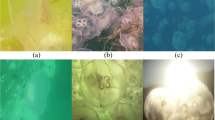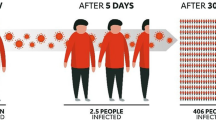Abstract
In recent years, a large number of cyanobacteria formed harmful blooms. The traditional method of preventing and controlling cyanobacteria blooms is to manually observe the video image to find the outbreak site of cyanobacteria, and manually prompt the salvage or chemical treatment according to the degree of cyanobacteria outbreak. Due to the traditional methods are difficult to early warning timely and accurately, we designed a real-time monitoring system of cyanobacteria blooms. The system can automatically identify cyanobacteria in the video image and calculate the coverage rate of cyanobacteria to realize the automatic warning of cyanobacteria bloom outbreak. First, we propose EGAN (Enhanced Generative Adversarial Networks) algorithm to improve the accuracy of cyanobacteria identification, the precision is 94.03%, the recall is93.65%. Second, we use the coverage rate of cyanobacteria to determine if (and when) early warning of cyanobacteria salvage. The proposed cyanobacterial video monitoring system not only helps Environmental Monitoring Center of Wuxi to provide early warning of the outbreak of cyanobacteria in real time, but also provides effective strategies for subsequent prevention and control by analyzing the cyanobacterial video data.















Similar content being viewed by others
References
Chen LC, Papandreou G, Kokkinos I et al (2014) Semantic image segmentation with deep convolutional nets and fully connected CRFs. Comput Sci (4):357–361. https://doi.org/10.48550/arXiv.1606.00915
Chen LQ, Zhang J, Chen XL et al (2016) Research on meteorological factors and Logistic prediction model of cyanobacterical blooms in Erhai Lake. J Cent China Norm Univ (Nat Sci) 50(04):606–611
Chen LC, Papandreou G, Kokkinos I et al (2018) DeepLab: Semantic image segmentation with deep convolutional nets, Atrous convolution, and fully connected CRFs. IEEE Trans Pattern Anal Mach Intell 40(4):834–848
Fang SZ, Yan X, Peng B (2019) Design and implementation of the cyanobacteria algal bloom monitoring and pre-warning spatial information system in Lake Dian. Inform Technol Netw Secur 38(04):97–101
Goodfellow I, Pouget-Abadie J, Mirza M et al (2014) Generative adversarial nets. Proceedings of the 2014 International Conference on Neural Information Processing Systems. MIT Press, Cambridge, 2672 -2680
Jia JM, Luo w, Du TT et al (2015) Valuation of changes of ecosystem services of Tai Lake in recent 10 years. Acta Ecol Sin 35(7):2255–2264
Klinger R, Tomanek K (2007) Classical probabilistic models and conditional random fields. [online] Available: http://ls11-www.cs.uni-dortmund.de/_media/techreports/tr07-13.pdf
Kingma D, Ba J (2014) Adam: A method for stochastic optimization. arXiv preprint arXiv: 1412.6980
Li YC, Xie XP, Zhu XL et al (2016) Applying remote sensing techniques in analysis of temperature features causing cyanobacteria bloom in Lake Taihu. J Lake Sci 28(6):1256–1264
Li X, Sun W, Li L (2017) Study on the recognition of spirulina based on visible light remote sensing of the small UAV. Geo Spat Inf Technol 40(4):153–158
Lin Y, Pan C, Chen YY et al (2011) Recognition of cyanobacteria bloom based on spectral analysis of remote sensing imagery. J Tongji Univ (Nat Sci) 39(8):1247–1252
Liu JP, Ma XY (2015) Forecast of algae content in raw water of waterworks based on GIS and RBF neural network. China Water Wastewater 31(09):66–69
Liu F, Chen Z, Wang J (2019) Video image target monitoring based on RNN-LSTM. Multimed Tools Appl 78:4527–4544
Long J, Shelhamer E, Darrell T (2015) Fully convolutional networks for semantic segmentation. 2015 IEEE Conference on Computer Vision and Pattern Recognition (CVPR)
Luo AN, Zheng J (2018) Semantic segmentation of cyanobacteria pictures based on DCNN under complicated illumination. Comput Appl Softw 35(4):254–259
Perdigão P, Lousã P, Ascenso J et al (2020) Visual monitoring of High-Sea fishing activities using deep learning-based image processing. Multimed Tools Appl. https://doi.org/10.1007/s11042-020-08949-9
Xia J, Wu WQ, Xu HY (2018) Application of BP neural network based on principal component analysis in algal bloom prediction. Int J Ecol 7(2):53–60
Yu JB, Shang FF, Wang XY (2018) Cyanobacterial bloom forecast method based on genetic algorithm-first order lag filter and long short-term memory network. J Comput Appl 38(7):2119–2123
Zhu YD, Wang Y, Cheng LG et al (2014) Application of cyanobacteria blooms integrated monitoring system in Taihu Lake. Water Resour Informatization (01):33–38
Zhu PIsolaJun-Yan, Zhou et al (2018) Image-to-image translation with conditional adversarial networks. arXiv preprint arXiv: 1611.07004v3 [cs.CV]
Acknowledgements
This work is supported Jiangsu Key Laboratory of Media Design and Software Technology. We also thank Environmental Monitoring Center of Wuxi for providing us with video data of cyanobacteria.
Author information
Authors and Affiliations
Corresponding author
Additional information
Publisher’s Note
Springer Nature remains neutral with regard to jurisdictional claims in published maps and institutional affiliations.
Rights and permissions
Springer Nature or its licensor holds exclusive rights to this article under a publishing agreement with the author(s) or other rightsholder(s); author self-archiving of the accepted manuscript version of this article is solely governed by the terms of such publishing agreement and applicable law.
About this article
Cite this article
Chen, L., Shi, Y. & Du, Y. Real-time monitoring system of cyanobacteria blooms using deep learning approach. Multimed Tools Appl 81, 42413–42431 (2022). https://doi.org/10.1007/s11042-022-13490-y
Received:
Revised:
Accepted:
Published:
Issue Date:
DOI: https://doi.org/10.1007/s11042-022-13490-y




